2020 Range Rover Evoque First Drive - Familiar yet New
The script for the first-gen Range Rover Evoque included downsizing the Discovery luxury experience to a compact size and extending the distinct styling and off-road capability the brand is known for. The first-generation Evoque came in two-door and four-door variants, followed by a two-door cabrio version.
The second-gen Evoque follows the original script, but drops the three-door and cabrio versions. Land Rover will offer Evoque in six trim levels: S, SE, First Edition, R-Dynamic S, R-Dynamic SE, and R-Dynamic HSE. I tested several pilot-production 2020 European-spec SE trimmed Evoques during a media-launch program. In freakin’ Greece, of all places.
Over several days we were able to test the Evoque on-highway, off-road, and even suspended high in the air – more on that shortly. After all that extensive on-road driving and some mild-to-moderate difficulty wet/dry off-road driving, here’s what buyers can expect of the second-generation Evoque.
(Full disclosure: Range Rover provided airfare to Athens, Greece to drive the Evoque. Journalists were afforded food and lodging for four days in upscale hotels and tickets to an attraction.)
All 2020 Evoques launch with a 2.0-liter Ingenium four-cylinder engine providing a modest 246 horsepower. Following a late-spring launch, Land Rover will offer a 296-horsepower mild-hybrid system, but only on higher trim levels. Backing the gas-only engine was a nine-speed ZF transmission with a traditional shift handle and paddle shifters.
For generations, Land Rovers have crawled over the Earth earning a reputation as some of the toughest, capable, and now, technologically advanced on/off-road vehicles on the market. In the standard OEM attempt to emphasize those points Land Rover plotted an on/off road journey for journalists around Athens. The drive started with an on-road shakedown.
Evoque rides on Range Rover’s Transverse Architecture and weighs 65 pounds less than the outgoing model. The suspension delivers control and comfort, and the 20-inch wheels (US models will have 18-, 20-, and 21-inch options) and low-profile Pirelli Scorpion 235/50 tires provide good feedback. The Adaptive Dynamics system pairs continuously variable suspension dampers and intelligent sensors to scan road conditions every 100 milliseconds, adjusting damper settings in conjunction with changing road surfaces.
The acceleration from the base 246-hp engine will not remind you of an Audi Q3 or BMW X3, thanks to a 0 to 60 time of 7.0 seconds. The engine loafs when cruising at a static speed or with very light throttle input. It took longer than I liked to wake up when I stepped on the gas. Thankfully, I discovered that using the Sport mode or paddle shifting the transmission will alleviate the issue. The nine-speed ZF transmission appeared to get confused a few times when quick drive/reverse/drive gear changes were called upon.
My SE-trimmed Evoque sported a raft of on/off road driver aids, including a torque-on-demand system. This system routes power to the rear axle as needed, meaning Evoque is front-wheel drive until traction loss requires the rear axle to get involved. During off-roading, I tested Terrain Response 2, which has sand-grass, gravel-snow, mud and ruts, general and eco modes. You can also go “full auto” and let the Evoque choose which mode to use based on terrain detection. Land Rover set up a moderately-difficult off-road course where I tested several terrain modes and Gradient Release Control hill holder.
I stopped on a steep 45-degree rutted gravel incline, and after a two-second delay, I released the brake, stayed in place, and then with a slight press of the pedal I was off. On the way down Hill Descent Control used engine braking to slowly advance me down.
I also tested yet another tech aid – Land Rover’s All Terrain Progress Control. Select your speed and this driving aid functions as low-speed off-road cruise control. But the fun wasn’t over. I took my Evoque down into a winding portion of river (Evoque can handle a depth up to 23.6 inches) that would strand competitors.
Finally, I tested ClearSight Ground View, which is part of the optional 360-Surround Camera system and uses a system of cameras in the grille/door mirrors to virtually see through the hood and under the front end of the vehicle. This feature works well in parking lots.
Land Rover had a “surprise drive” in store for us. During an on-road drive portion of the program, we took a detour that led us to railroad tracks that we turned onto and straddled till we reached the edge of the famous Corinth Canal of Greece.
Spanning the canal was a railroad bridge. As a guide motioned us forward, we slowly traversed the one-track bridge, stopping several times to take photos of the water and steep sides of the canal below.
Other than emphasizing Evoque’s 8.3 inches of ground clearance, the railroad bridge didn’t really challenge the Evoque much, but it was a memorable way to cross the canal.
The Evoque can do more than light off-roading, and it’s a very competent and smooth luxury crossover on-road.
An observer looking at the second-generation version might think that it’s only a mid-cycle refresh. Every body panel on the Evoque is all-new, along with slimmer LED headlights, revised nose, taller beltline, and retractable flush-fitting door handles. Land Rover calls the Evoque “a sophisticated evolution of the original’s distinctive coupe-like silhouette” but despite the marketing speak for “relatively minor changes” the only part that carries over is a single door handle.
The overall dimensions of the new Evoque grew just 0.8 inches wider in wheelbase. The slight increase in wheelbase and the 2020 model’s shorter overhangs provide second-row rear-seat passengers with a tad more legroom and a 6 percent increase in luggage space.
A great feature is a deep-tint panoramic sunroof. It’s an option and doesn’t open, but it spans the front and slightly behind rear passenger areas, makes the interior seem twice as large, and provides great views.
Less is now more. Evoque now comes with fewer knobs, switches, and distractions. There is a wider range of materials, including a new leather-like option, called Kvadrat. I did not like this new material as it heated up my backside to the point that my co-driver and I thought the heated seats had been turned on – even though my test vehicle did not come optioned with heated seats. However, a Range Rover representative assured me that heated leather will be available for North America-bound Evoques.
Less complication does not mean low-tech. Land Rover’s simplification program results in a new two-screen center stack dubbed InControl Touch Pro Duo. A lower 10-inch screen molded into the console contains vehicle functions via touchpoints on the screen and a pair of dials below that alternate functions based on the screen selection. According to Land Rover, after you spend some time behind the wheel “Smart Settings” that use artificial intelligence algorithms will start to learn your preferences and automate comfort and media settings. The “self-learning” technology recognizes the driver from their key fob and phone.
If you want to get into an entry Evoque (basic S trimmed version), price of admission is $42,650 with the 246-hp engine, and the SE with the same engine is $47,200. The R-Dynamic (S) with the 296-hp hybrid drivetrain is $46,600 and goes up to $55,800 for the R-Dynamic (HSE) with everything. All trims add a $995 destination fee.
Fuel economy is listed at 20 mpg city/27 mpg highway/23 combined for the base motor and 21/26/23 for the hybrid.
With the new 2020 Range Rover Evoque, there is more than meets the eye. Range Rover has stepped it up with added driving safety and comfort tech that surpasses virtually all competitors in the class, but the experience is marred by the lower trims lacking a peppier engine. However, Evoque is more capable than anything in its class as a double threat: a luxurious compact crossover that can get really dirty.
[Images © 2019 Jeff Taylo/TTAC]
More by Jeff Taylor
Latest Car Reviews
Read moreLatest Product Reviews
Read moreRecent Comments
- Lorenzo This car would have sold better if there was a kit to put fiberglass toast slices on the roof.
- Lorenzo The Malibu is close to what the 1955 Bel Air was, but 6 inches shorter in height, and 3 inches shorter in wheelbase, the former making it much more difficult to get into or out of. Grandma has to sit in front (groan) and she'll still have trouble getting in and out.The '55s had long options lists, but didn't include a 91 cubic inch four with a turbo, or a continuously variable transmission. Metal and decent fabric were replaced by cheap plastic too. The 1955 price was $1765 base, or $20,600 adjusted for inflation, but could be optioned up to $3,000 +/-, or $36,000, so in the same ballpark.The fuel economy, handling, and reliability are improved, but that's about it. Other than the fact that it means one fewer sedan available, there's no reason to be sorry it's being discontinued. Put the 1955 body on it and it'll sell like hotcakes, though.
- Calrson Fan We are already seeing multiple manufacturers steering away from EVs to Hybrids & PHEVs. Suspect the market will follow. Battery tech isn't anywhere close to where it needs to be for EV's to replace ICE's. Neither is the electrical grid or charging infrastructure. PHEV's still have the drawback that if you can't charge at home your not a potential customer. I've heard stories of people with Volts that never charge them but that's a unique kind of stupidity. If you can't or don't want to charge your PHEV then just get a hybrid.
- AZFelix The last time I missed the Malibu was when one swerved into my lane and I had to brake hard to avoid a collision. 1 out of 5⭐️. Do not recommend.
- 2ACL I won't miss it; it was decent at launch, but in addition to the bad packaging, GM did little to keep it relevant in the segment. I'd prefer that another domestic automaker doesn't just give up on the mainstream sedan, but unlike some of Ford's swan songs, the Malibu made an indifferent case for why they should live.




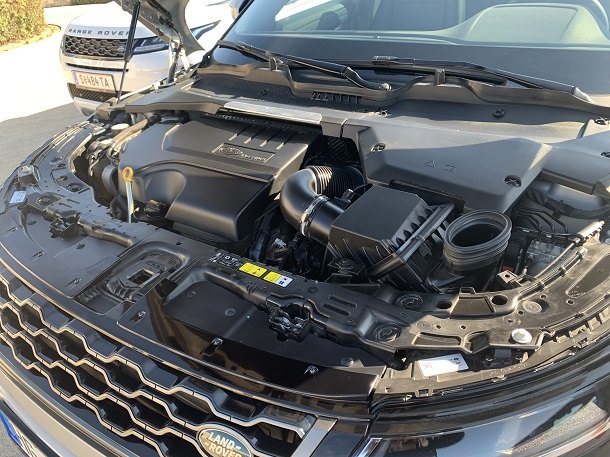




















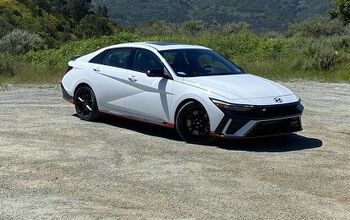
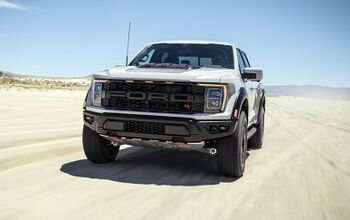
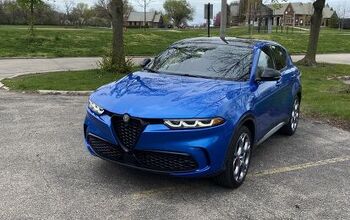
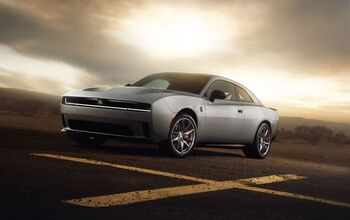


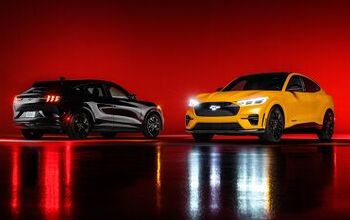


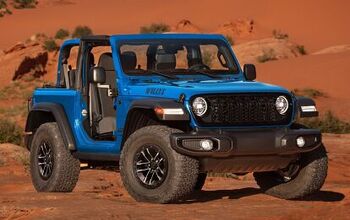
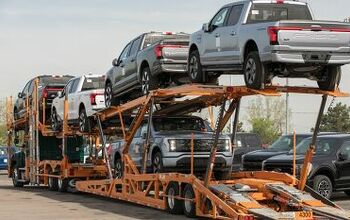


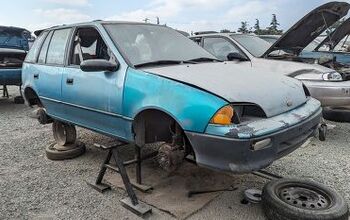

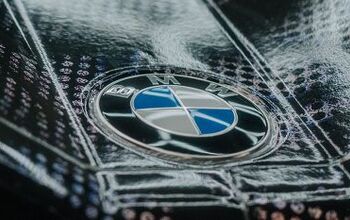
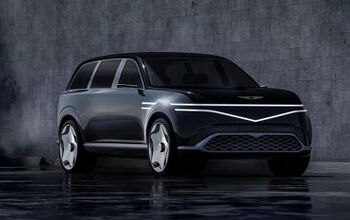
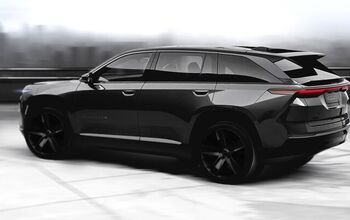
Comments
Join the conversation
That bright shinny thing in the last picture is the touch screen I take it. Interesting rake angle. Should be fun on sunny days. I wonder if the reviewer had any issues with it.
Flush door handles when the car is off that electrically extend when you enter...hmm. More than once I've had to chip my way into an ice-encrusted car in the cold season. Even power retractable running boards (with much stronger motors) suffer here. Aside from all of the electrical gremlins LR/RR is historically known for, this will be a problem. I'll pass, thank you.